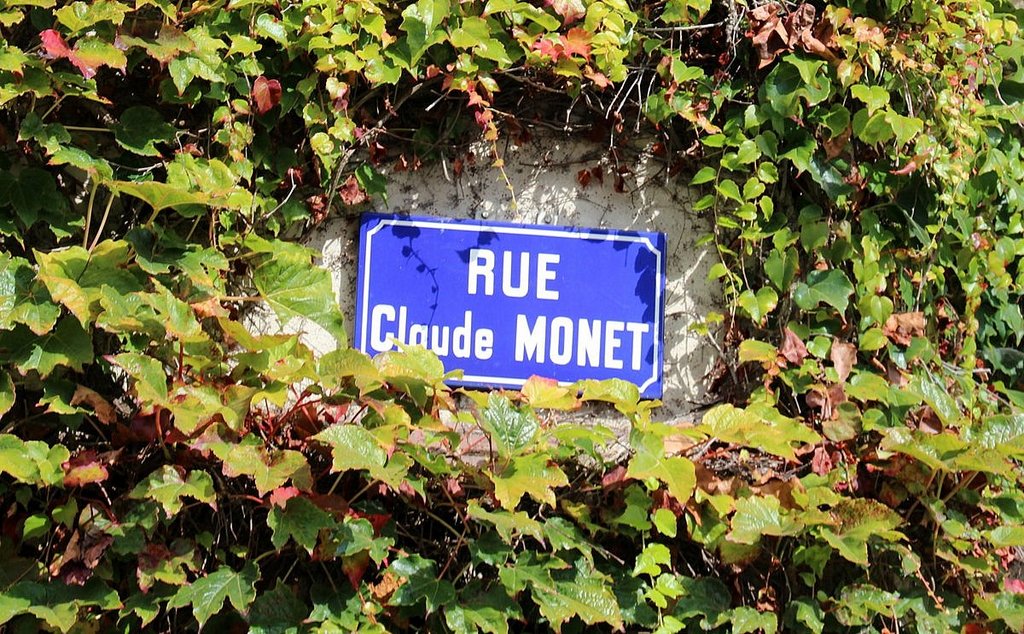Step into Claude Monet’s Enchanting World: Immerse Yourself in the Beauty of Giverny and Unleash Your Inner Impressionist with Monet in Paris! You can get a feel for the garden, his art and the world of French Impressionism in this new 360-degree multi-sensory experience. The garden, its water lilies and the iconic arched green bridge are amongst the many artworks featured in the show launched in Brisbane, Australia.
Outside Monet in Paris in Brisbane
Exploring Monet’s Garden
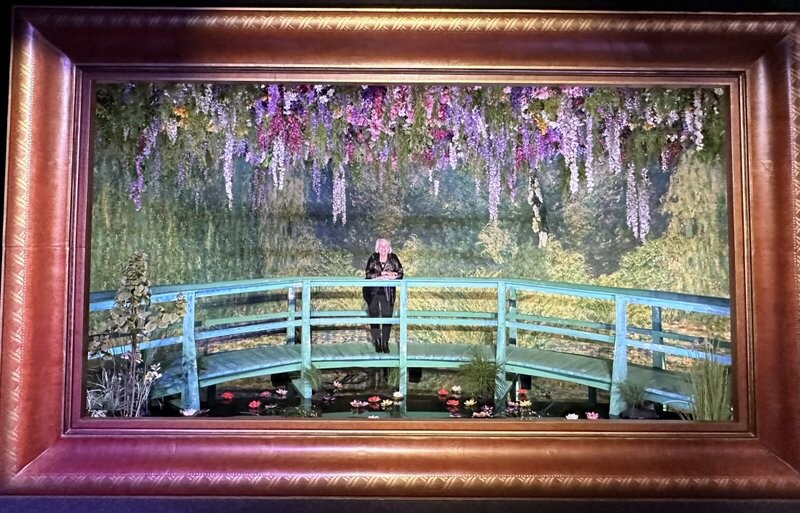
Who was Claude Monet?
Claude Monet stood out as a pivotal figure whose work would come to define the Impressionist movement during the late 19th century when Paris was a vibrant hub of artistic expression, with countless painters and sculptors gathering to explore new artistic frontiers.
Born in 1840 in Paris, Monet showed an early passion for art and began honing his skills at a young age. He drew inspiration from the natural world, capturing landscapes and scenes with a unique and innovative approach to light and colour. Monet’s artistic journey brought him to the bustling city of Paris, where he found himself in the company of like-minded artists.
A central gathering place for these artists was the Café Guerbois, a popular haunt in the Batignolles district. Here, Monet and his peers, including Édouard Manet, Pierre-Auguste Renoir, and Camille Pissarro, would engage in spirited discussions about art, philosophy, and politics. Their conversations laid the foundation for the birth of the Impressionist movement.
Together, these artists challenged the prevailing artistic norms of the time. Rejecting the meticulous and detailed techniques of the academic tradition, they sought to capture the fleeting essence of a moment, emphasizing the play of light and colour. Their paintings celebrated the beauty found in everyday scenes, from bustling city streets to tranquil gardens and idyllic riversides.
Monet and his contemporaries faced significant resistance from the conservative art establishment, which viewed their style as unconventional and radical. Undeterred, they banded together, forming the Société Anonyme Coopérative des Artistes Peintres, Sculpteurs, Graveurs (commonly known as the Impressionists). In 1874, they held their first group exhibition, which was met with mixed reviews but marked the beginning of a new artistic movement.
Throughout his career, Monet’s work evolved, displaying a mastery of capturing the ever-changing qualities of light and atmosphere. His paintings, such as “Haystacks,” “Rouen Cathedral,” and “Water Lilies,” pushed the boundaries of representation, exploring the subtle nuances of colour and form.
Paris continued to be a vibrant backdrop for Monet and his fellow artists. They found inspiration in the city’s bustling streets, iconic landmarks like the Eiffel Tower, and the serene beauty of the Seine River. Monet’s commitment to capturing the essence of these scenes, even in the face of personal tragedy and financial struggles, solidified his place as a trailblazer of Impressionism.
As the years went by, the Impressionist movement gained recognition and acceptance. Monet’s paintings, once met with scepticism, were now celebrated for their boldness and innovation. Today, his masterpieces can be found in museums and galleries worldwide, a testament to the enduring legacy of this remarkable group of artists and their contributions to the world of art.
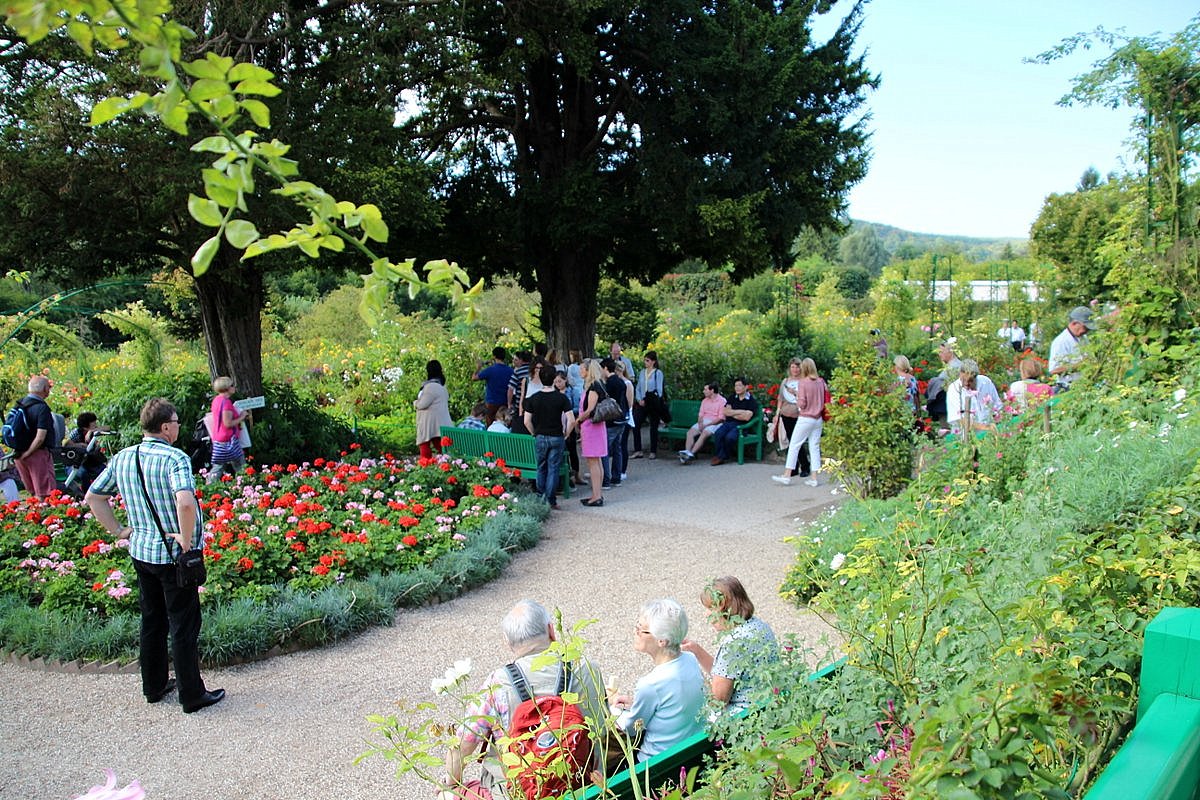
Exploring Monet’s Garden
The beautiful garden provided inspiration for Claude Monet, a famous French painter for more than 20 years, and it’s not hard to see why. The plantings are casual, drifts of nasturtiums, bold beds of geraniums, and blocks of other brightly coloured flowers that dance around the garden, but the effect is soothing.
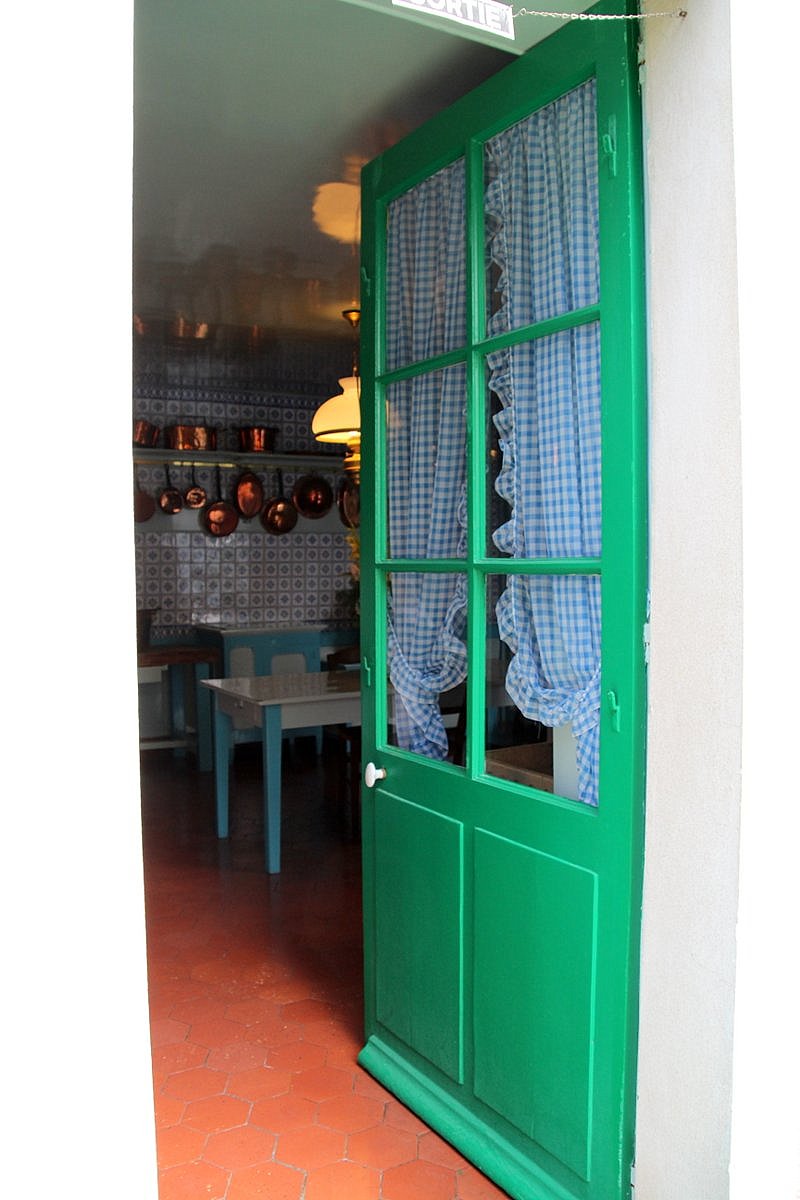
A cook or a painter?
I visited the garden with a Trafalgar Insider tour, and Travel Director Sarah told us that Monet actually thought he was a better cook than a painter. From the size of his dining table, meals must have been a popular event, and the large kitchen was well equipped to handle a crowd.
The dining table is long and set with a white cloth and 14 yellow chairs that are often featured in his paintings. A long row of shiny copper pans hangs on the blue-tiled kitchen walls, but now the wood stove is cold. You can’t take photographs in the house, but I managed to capture a glimpse through the kitchen door.

Visiting Claude Monet’s garden
The house was damaged during World War II, then the staircase collapsed, and floors and ceilings rotted. It took ten years of restoration work before Monet’s house and garden were opened to the public in the 1980s.
Visitors can wander through the gardens and the house from March 23 to November 1 each year, from 9.30 am to 6 pm daily. The last admission is at 5.30 pm, but it would be a waste to go for such a short time. This is a garden to enjoy at leisure, to wander the paths and drink in the views. When the property is closed during winter, the gardens are replanted for the following year’s opening.

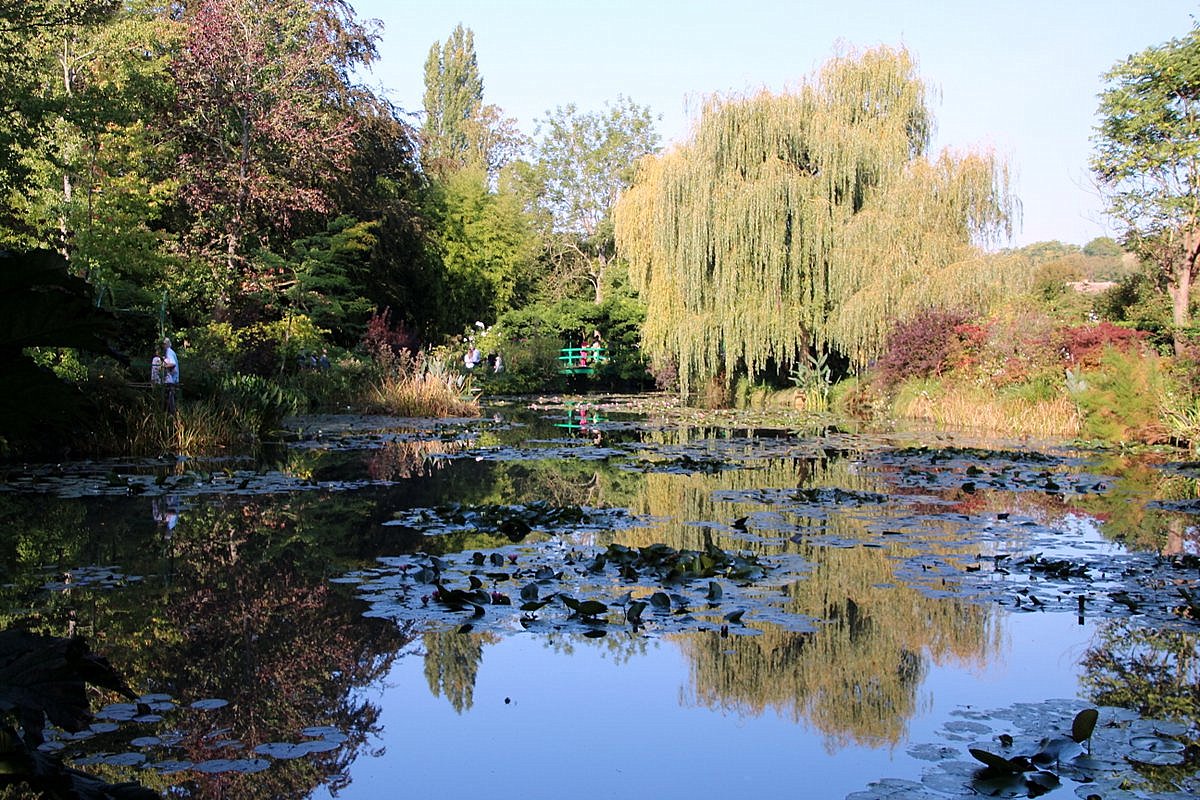
Claude Monet’s water garden
There are two sections to the garden – a flower garden called Clos Normand in front of the house and a Japanese-inspired water garden on the other side of the road. Today the water garden is reached via a subway, but in Monet’s time, he merely strolled across the street.
The water garden is where you will find the famous green Japanese bridge draped with wisterias. There are other similar small bridges and graceful weeping willows, all surrounded by a swath of flowers. As I wander the willow-shaded pathways, my Trafalgar Travel Director, Sarah, reminds me to look at the reflections, not just the view, as the reflections feature strongly in Monet’s paintings.

Giverney Village
After I’ve had my fill of the garden and house, it’s off down to the historic Giverny village for lunch at the café. It seems to be the only one around, but that certainly hasn’t made them complacent, and the food and coffee are excellent. There’s a short, self-guided walk through the village, which has a lovely church to view.
Monet’s spirit remains in these flower-filled gardens, in the studio filled with paintings just as he liked to view them and in the garden view through the wide-open windows visible from his comfortable bed.
Getting there
I visited the garden on a Trafalgar Insider Tour, but it is also easy to get there by train. Board the train from St-Lazare station in Paris and travel to the Vernon-Giverny station.
The Foundation Claude Monet runs shuttle buses between the station and the house.
The garden is open every day from March 22 to November 1.
It is always a beautiful garden to visit, but if you have a particular flower that you love, follow this guide –
- March – hyacinths and narcissi
- April- daffodils and cherry trees
- May – tulips and forget-me-nots
- June – roses and the first water lillies
- July – sunflowers and hollyhocks
- August – dahlias and gladioli
- September – nasturtiums
- October – purple sages and pink asters, fiery red liquidamber
For more information, visit claude-monet-giverny.fr
Disclaimer: Kerry Heaney travelled to Monet’s Garden as a guest of Trafalgar on a Trafalgar Insider tour
